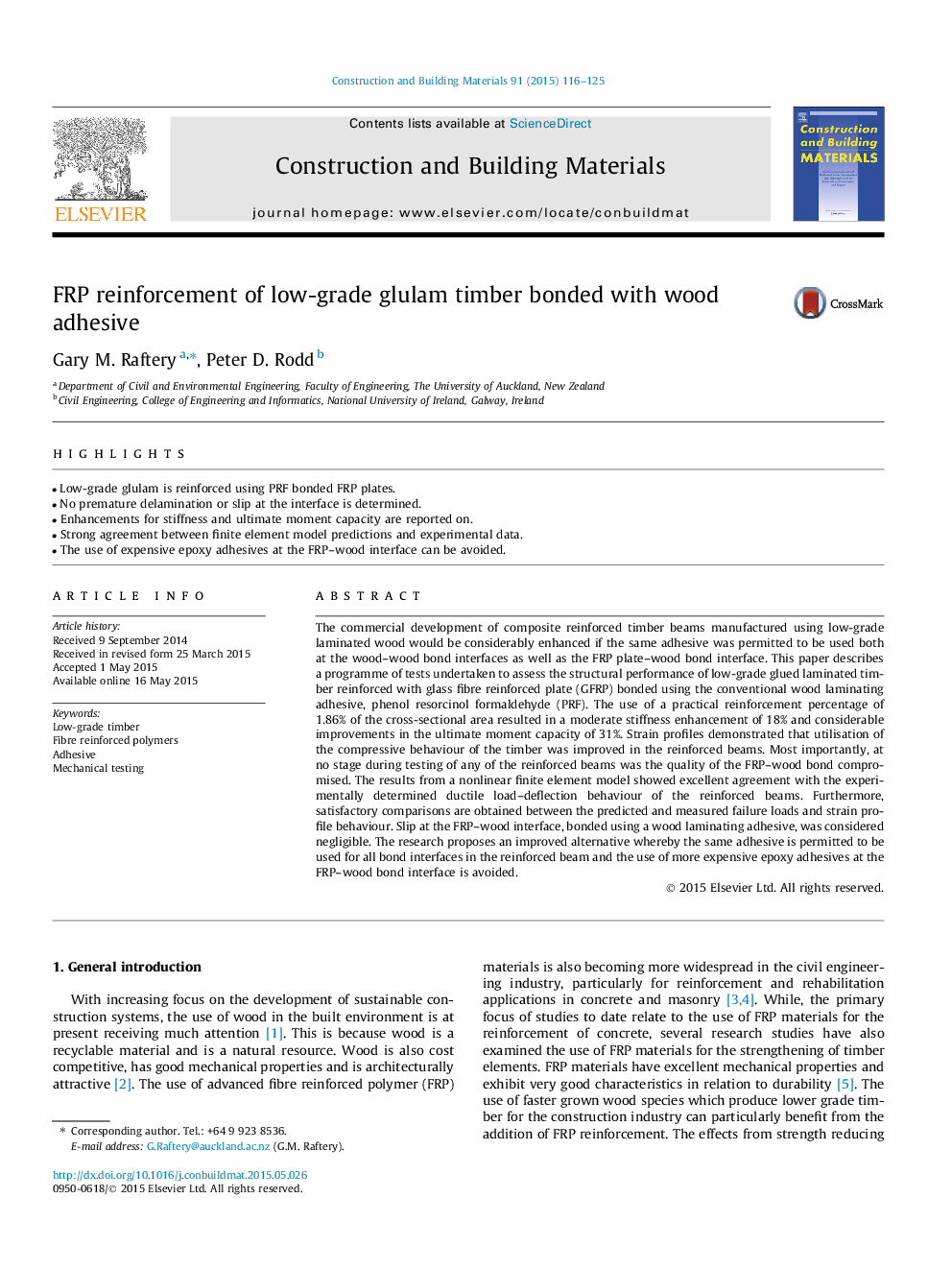| Article ID | Journal | Published Year | Pages | File Type |
|---|---|---|---|---|
| 256872 | Construction and Building Materials | 2015 | 10 Pages |
•Low-grade glulam is reinforced using PRF bonded FRP plates.•No premature delamination or slip at the interface is determined.•Enhancements for stiffness and ultimate moment capacity are reported on.•Strong agreement between finite element model predictions and experimental data.•The use of expensive epoxy adhesives at the FRP–wood interface can be avoided.
The commercial development of composite reinforced timber beams manufactured using low-grade laminated wood would be considerably enhanced if the same adhesive was permitted to be used both at the wood–wood bond interfaces as well as the FRP plate–wood bond interface. This paper describes a programme of tests undertaken to assess the structural performance of low-grade glued laminated timber reinforced with glass fibre reinforced plate (GFRP) bonded using the conventional wood laminating adhesive, phenol resorcinol formaldehyde (PRF). The use of a practical reinforcement percentage of 1.86% of the cross-sectional area resulted in a moderate stiffness enhancement of 18% and considerable improvements in the ultimate moment capacity of 31%. Strain profiles demonstrated that utilisation of the compressive behaviour of the timber was improved in the reinforced beams. Most importantly, at no stage during testing of any of the reinforced beams was the quality of the FRP–wood bond compromised. The results from a nonlinear finite element model showed excellent agreement with the experimentally determined ductile load–deflection behaviour of the reinforced beams. Furthermore, satisfactory comparisons are obtained between the predicted and measured failure loads and strain profile behaviour. Slip at the FRP–wood interface, bonded using a wood laminating adhesive, was considered negligible. The research proposes an improved alternative whereby the same adhesive is permitted to be used for all bond interfaces in the reinforced beam and the use of more expensive epoxy adhesives at the FRP–wood bond interface is avoided.
